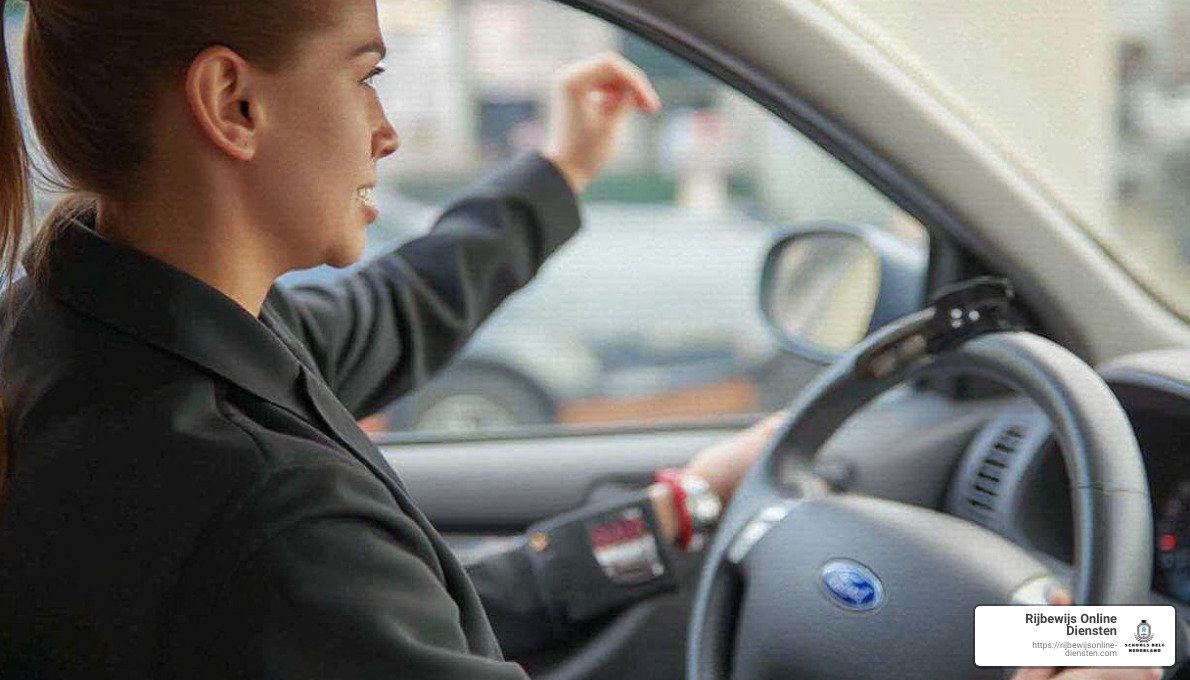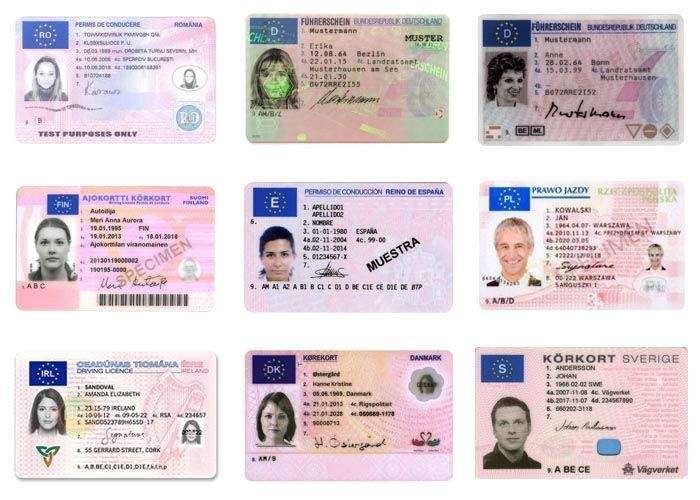Europees Rijbewijs Kopen
Everything You Need to Know About the EU Driving License
Driving License European Union: 5 Vital Facts
The driving license european union system offers a harmonized model that simplifies driving across EU countries. If you’re looking for quick insights, here’s what you need to know:
- Single License Model: EU driving licenses have a standard look resembling credit card-sized plastic cards.
- Uniform Standards: The EU license model streamlines regulations and promotes road safety by ensuring consistent driving standards across member countries.
- Driving Categories: Licenses cover a range of vehicles, from motorcycles to trucks, facilitating cross-border travel.
- Secure and Up-to-Date: With updated security features, these licenses are designed to be harder to forge or tamper with, enhancing safety.
The harmonization of driving licenses across Europe means freedom and ease for those driving anywhere in the EU. This standardized approach not only removes barriers for EU citizens moving from one member state to another but also ensures everyone meets the same competency standards for safer roads. For busy individuals like Alex, this unified system can dramatically cut down the complexities when renewing or replacing a driving license, making traveling and working across Europe smoother and more efficient.
Unlock the Freedom of Europe’s Roads with Our Online Driving License
Are you ready to explore the charm of Europe, but held back by the complexities of local driving regulations? Look no further, our platform offers a straightforward path to obtain a European Driving License, giving you the liberty to roam the continent’s scenic highways and hidden gems.
Imagine cruising through the iconic streets of Paris, the medieval towns of Italy, or the rugged coastlines of Spain, all at your fingertips, with the confidence of having a valid license. Our process eliminates the stress and bureaucracy typically associated with securing an international driving permit.
How does it work? Simply complete our easy, online application, and our team of experts will guide you through each step, ensuring a seamless experience. Our extensive network of trusted partners across the EU guarantees that your license will be issued promptly and efficiently.
But don’t just take our word for it, countless individuals have already discovered the convenience and savings that come with a European Driving License through our platform. With our guidance, you can bypass costly language courses, lengthy paperwork, and the uncertainties of local process variations.
Take control of your European adventures and experience the thrill of driving in a new land with our online driving license solution. Secure your place behind the wheel today and uncover the hidden treasures of the Old World, it’s easier than you think!
Ready to hit the road? Begin your application now and prepare for a European escapade you’ll never forget.

Requirements for Obtaining an EU Driving License
To obtain a driving license european union, you need to meet several key requirements. These ensure that all drivers are competent and safe on the roads, maintaining the high standards expected across the EU.
Residency
First, you must apply for your driving license in the EU country where you usually live. This is your place of usual residence typically where you spend at least 185 days each year due to personal or work-related ties. If you’re a student, you can apply in your host country after living there for at least 6 months.
Age Requirements
The minimum age to apply for a driving license varies depending on the vehicle category. Here’s a quick breakdown:
- 16 years: For mopeds and some motorcycles.
- 18 years: For standard cars.
- 20 to 24 years: For larger vehicles like trucks and buses, depending on specific conditions.
Some countries might have different age requirements, so always check the local rules.
Medical Checks
Your medical fitness is crucial. Before issuing a license, authorities will assess your health to ensure you can drive safely. If you’re a lorry or bus driver, expect a medical check-up every 5 years. As you age, more frequent checks might be required to renew your license.
Driving Test
The driving test is a key step and includes both a theory and a practical exam. While there are no EU-wide rules for driver training, there are minimum standards for the tests themselves. Examiners undergo rigorous training to maintain quality and ensure fairness. Passing these tests proves you meet the EU’s driving competency standards.
By meeting these requirements, you’ll be well on your way to obtaining your EU driving license, opening up the roads of Europe for your travels and trips.
Unlock Europe’s Roads: Your Seamless Path to an EU Driving License
Imagine stretching out on the open road, the sun warm on your face, the ancient cities and breathtaking landscapes of Europe unfolding before you. From the vibrant streets of Rome to the serene fjords of Norway, having a European Driving License isn’t just a document, it’s your key to unparalleled freedom, spontaneous adventure, and a truly immersive experience of this incredible continent.
But let’s be honest: the journey to obtaining or converting an EU driving license can often feel like navigating a labyrinth of regulations, paperwork, and national specificities. It’s a process that, for many, is clouded in confusion, frustration, and endless questions.
What if there was a clearer, calmer path? What if you could cut through the bureaucracy, understand every step, and feel confident that you’re on the right track to legally secure your EU driving credentials?
That’s precisely why we built our platform. We don’t just offer information; we offer a compass. We’ve meticulously mapped out the diverse requirements across EU member states, transforming complex legal jargon into clear, actionable guidance that empowers you to achieve your driving dreams.
Why an EU Driving License is More Than Just a Card
Beyond the sheer thrill of independent travel, a valid EU driving license offers significant advantages:
- Unrestricted Mobility: Drive legally and confidently across all 27 EU member states, plus Iceland, Liechtenstein, and Norway.
- Enhanced Residency: It’s often a crucial document for long-term residents, students, and workers establishing their lives in Europe.
- Simplified Bureaucracy: Avoid the hassle of International Driving Permits (IDPs) and often complex car rental processes for non-EU license holders.
- Peace of Mind: Knowing you’re fully compliant with local laws allows you to truly relax and enjoy every mile.

Your Journey, Streamlined and Supported
We understand the specific challenges you face, whether you’re a new resident needing to convert your existing license, an aspiring driver looking to take your first tests, or simply seeking clarity on the process. Our online platform is your dedicated guide, designed to:
- Demystify the Process: We break down the official requirements for obtaining a new license or converting your existing non-EU license, country by country. No more guesswork, just verifiable facts.
- Provide Tailored Roadmaps: Based on your specific situation (country of residence, origin of current license, etc.), we help you identify the precise documents, tests, and steps needed to succeed.
- Connect You with Trustworthy Resources: From reputable driving schools to official government portals and practice test materials, we direct you to the right places, saving you countless hours of searching.
- Answer Your Burning Questions: Our extensive knowledge base and support resources address the common queries and concerns that often derail applicants.
Imagine the relief: no more endless internet searches, no more contradictory advice, just a clear, step-by-step pathway crafted to help you navigate your way to a legitimate EU driving license. We empower you with accurate information and the tools to succeed, ensuring your journey is as smooth as the European roads you dream of driving.
Driving License Exchange and Recognition in the EU
When you move to a new EU country, understanding how to handle your driving license european union is important. Whether you’re exchanging your license or checking if it’s recognized, here’s what you need to know.
Voluntary Exchange
If you decide to exchange your driving license voluntarily, you must be a resident of the new country. This means living there for at least 185 days per year. The authorities will check that your license hasn’t been restricted, suspended, or withdrawn before issuing a new one.
For example, if you have an old-style driving license, you’ll get the new standard format, which is a credit card-sized photo card. This modern license has been the standard since 2013.
Obligatory Exchange
In some cases, you must exchange your driving license. This is required if:
- Your license is lost, stolen, or damaged.
- You have a license with an indefinite validity period, and the local authorities require an exchange after two years.
- You commit a traffic offense in your new country.
These rules ensure that all drivers comply with local laws and standards.
Recognition Rules
Driving licenses issued by EU countries are generally recognized across the EU. However, there are a few exceptions:
Provisional or Temporary Licenses: These may not be recognized in other EU countries. Be cautious if you have one of these, especially if you’re a professional driver working cross-border.
Non-EU Licenses: If your EU license was issued in exchange for a non-EU one, another EU country might not recognize it. Always check the specific rules with local authorities.
For instance, if you have a driving license valid for life, it’s recognized across the EU, but you might need to exchange it for the new standard model eventually.

Driving License Validity and Renewal
Understanding the validity periods and renewal process for your driving license european union is crucial for staying on the road legally. Here’s what you need to know:
Validity Periods
EU driving licenses have different validity periods depending on the vehicle category and your age. Typically, a standard car driving license is valid for:
- 10 years for most drivers under the age of 65.
- 5 years for drivers aged 65 and over.
Some specific licenses, like those for lorry or bus drivers, may have shorter validity periods due to the need for more frequent medical checks.
Renewal Process
Renewing your EU driving license is generally straightforward. You will receive a reminder from the local authorities before your license expires. Here’s what you typically need to do:
Submit an Application: Fill out the renewal form, either online or in person, depending on your country’s process.
Provide Identification: Present your current driving license and a valid ID or passport.
Pay the Fee: There is usually a small fee for renewing your license.
Medical Checks: Depending on your age and the type of license, you might need a medical examination to ensure you’re fit to drive.
Once you’ve completed these steps, you’ll receive your renewed license, often in the standard credit card-sized format.
Medical Checks
Medical checks are a key part of the renewal process, especially for older drivers and those with specific licenses like for buses or lorries. These checks ensure:
Vision and Hearing: Your ability to see and hear properly is essential for safe driving.
Overall Health: Conditions that might impair your driving ability are assessed.
Regular Updates: For certain professions, medical checks are required every five years.
These checks help maintain safety standards on the road and ensure that all drivers are medically fit to drive.
Next, we’ll discuss what it’s like driving in Europe with a non-EU license, including tips for US drivers and the necessity of an international driver’s license.
Driving in Europe with a Non-EU License
Driving in Europe can be a thrilling experience, but if you’re visiting from outside the EU, such as the US, there are a few things you should know before hitting the road.
Using a US License in Europe
If you’re an American planning to drive in Europe, you’re in luck. Most European countries allow you to drive with your valid US driver’s license for up to 90 days. This is perfect for short vacations or business trips. However, if your stay extends beyond 90 days, you might need additional documentation.
International Driver’s License
For longer stays or more extensive travel plans, obtaining an International Driver’s License (IDL) is recommended. While not always mandatory, an IDL can make your driving experience smoother. It serves as a translation of your US license and can be handy in situations where language barriers might arise, especially if you’re stopped by local authorities.
You can easily apply for an IDL in the US before your trip. It’s a simple process and usually costs between $50 and $100. Having an IDL can also make renting a car easier in some countries, as rental agencies may prefer or require it.
Rental Car Tips
Renting a car in Europe is a fantastic way to explore the continent at your own pace. Here are some tips to keep in mind:
Book in Advance: European rental cars can be in high demand, especially during peak tourist seasons. Booking early can save you both money and hassle.
Check Transmission: In Europe, manual transmission cars are more common than automatics. If you’re not comfortable driving a stick shift, make sure to specify an automatic when booking.
Understand Local Traffic Laws: Each country has unique driving rules. For example, in some countries, headlights must be on at all times, or there might be specific speed limits. Research these regulations beforehand to avoid fines.
Insurance Coverage: Check your current auto insurance policy and credit card benefits to see if they cover international car rentals. If not, consider purchasing additional coverage from the rental agency.
Fuel Costs: Gasoline can be more expensive in Europe than in the US. Factor this into your travel budget and consider renting a more fuel-efficient vehicle.
Driving in Europe with a non-EU license is entirely feasible and can improve your travel experience. Just be sure to prepare accordingly, ensuring you have all necessary documentation and a solid understanding of local driving customs.
Next, we’ll address some frequently asked questions about the EU driving license, including how US licenses are treated and the process for exchanging licenses within the EU.
Frequently Asked Questions about the EU Driving License
Navigating the rules around driving licenses in the European Union can be tricky, especially if you’re new to the area or visiting from abroad. Here are some common questions answered.
Can I use my US driver’s license in Europe?
Yes, you can use your US driver’s license in most European countries for up to 90 days. This applies to tourists and those on short-term visits. However, if you plan to stay longer, you might want to consider getting an International Driver’s License (IDL). While not mandatory everywhere, an IDL serves as a helpful translation of your US license and can ease communication with local authorities.
What are the minimum age requirements for an EU driving license?
The minimum age to obtain a driving license in the EU varies by vehicle type:
- 16 years: For mopeds and small motorcycles.
- 18 years: For standard passenger cars and larger motorcycles.
- 21 years: For buses and cargo vehicles.
- 24 years: For larger buses and heavier cargo vehicles.
That some countries may have stricter age requirements or additional rules. Always check the specific regulations in the country where you plan to apply for your license.
How do I exchange my driving license in the EU?
If you’re moving to an EU country, you might need to exchange your non-EU license for an EU one. The process typically involves:
- Proof of Residency: You must show that you are a resident in the EU country where you’re applying.
- Application Form: Fill out the necessary forms, which you can usually find on the local transport authority’s website.
- Medical Check: Some countries require a medical examination to ensure you’re fit to drive.
- Theory and Practical Tests: Depending on your original license and the country, you may need to pass local driving tests.

Each country may have different rules on recognizing and exchanging foreign licenses. It’s always best to check with local authorities to understand the specific requirements.
These FAQs cover the basics for Americans driving in Europe and those looking to transition to an EU driving license. Next, we’ll explore the validity and renewal process for EU driving licenses.
Conclusion
Navigating driving licenses in the European Union can seem daunting, especially for beginners. That’s where we come in. At rijbewijs online diensten, we specialize in guiding you through the complexities of obtaining and maintaining your EU driving license.
Guidance for Beginners
Starting out can be overwhelming, but we make it simple. Whether you’re applying for your first license or converting an existing one, our team provides expert guidance every step of the way. We help you understand the residency requirements, age limits, and necessary medical checks, ensuring you meet all the criteria with ease.
Our user-friendly platform is designed to make the application process straightforward. From document preparation to verification, we’ve got you covered.
Maintaining Your License
Once you have your EU driving license, it’s important to keep it valid. We offer ongoing support to help you steer the renewal process, which includes understanding the validity periods and scheduling medical checks when required. Regular renewals not only keep you legal on the road but also ensure your license has the latest security features, making it harder to forge or tamper with.
By choosing rijbewijs online diensten, you’re opting for a seamless experience. Our services are available across several European countries, including Belgium, the Netherlands, and Germany, among others.
Ready to start your journey with a European driving license? Visit our service page to learn more and begin your application today. We are here to make your driving experience in Europe as smooth and stress-free as possible.
Don’t Let Bureaucracy Hold You Back
Your European adventure awaits. Don’t let the administrative hurdles stand between you and the open road. With our platform, you gain a trusted partner, simplifying one of the most important steps in embracing life in Europe.
Ready to transform your driving dreams into reality, legally and confidently?
Click here to explore our platform and start your journey towards your official EU Driving License today!

